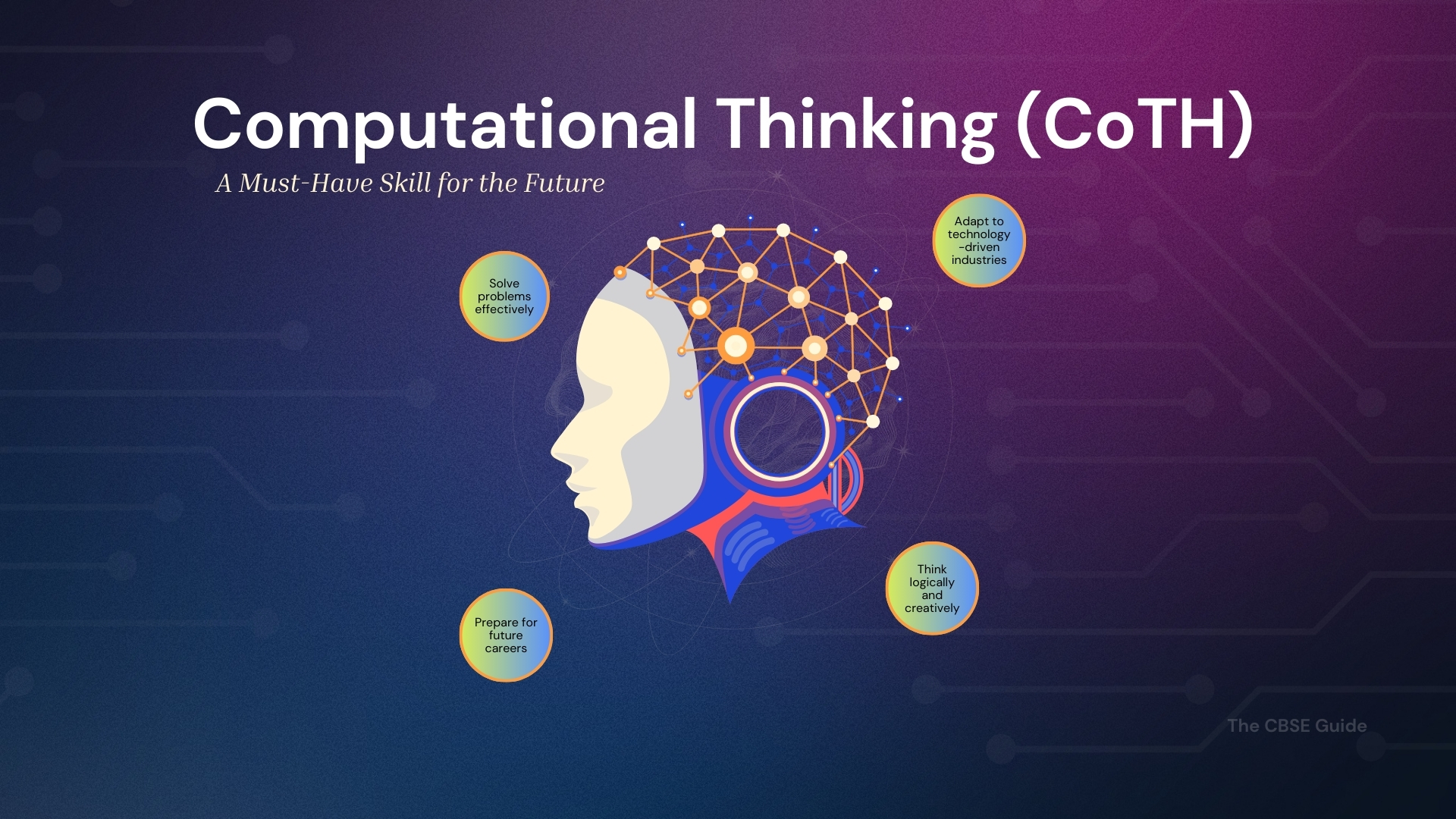Introduction
In today’s fast-paced digital world, problem-solving, logic, and creativity have become essential skills for students. Computational Thinking (CoTH) is a subject that helps develop these abilities by teaching students how to think like a computer scientist. With the growing influence of artificial intelligence (AI), automation, and data science, the importance of Computational Thinking in school curriculums is increasing. But what exactly is Computational Thinking (CoTH), and why should students learn it? Let’s explore!
What is Computational Thinking (CoTH)?
Computational Thinking (CoTH) is a problem-solving approach that helps students break down complex problems into smaller, manageable steps. It involves logical reasoning, pattern recognition, algorithms, and data organization to find efficient solutions.
Key Components of Computational Thinking:
- Decomposition – Breaking a problem into smaller parts.
- Pattern Recognition – Identifying similarities and trends in data.
- Abstraction – Filtering out unnecessary details to focus on the main problem.
- Algorithm Design – Creating step-by-step instructions to solve problems.
📌 Example: When students solve a math word problem, they first break it down into parts (decomposition), identify patterns in numbers (pattern recognition), remove irrelevant data (abstraction), and then create a step-by-step solution (algorithm design).
Why Computational Thinking (CoTH) is Essential for Students?
Enhances Problem-Solving Skills
CoTH encourages critical thinking and logical reasoning, which are useful in subjects like math, science, and coding. It helps students analyze problems and come up with structured solutions.
Prepares Students for the Digital Future
With AI, robotics, and automation shaping our world, students need computational skills to stay ahead. Learning coding, data analysis, and logical thinking from an early age helps them adapt to future job markets.
Develops Creativity and Innovation
Computational Thinking isn’t just about computers—it’s about thinking differently. It encourages students to explore new ways of solving problems, which is crucial for careers in engineering, business, and creative fields.
Improves Decision-Making Abilities
By learning how to analyze problems and develop step-by-step solutions, students become better decision-makers. This skill is valuable in academics, career planning, and even everyday life.
Builds Confidence and Adaptability
Computational Thinking helps students become independent learners. It gives them the confidence to approach complex challenges in a structured and logical manner.
Impact of Computational Thinking on Children’s Learning
Traditional learning methods focus on rote memorization, whereas Computational Thinking helps students develop a deeper understanding of concepts.
- How Computational Thinking Improves Learning: Math: Helps students break down complex equations into simpler steps.
- Science: Encourages logical reasoning and experimentation.
- Coding: Forms the foundation for learning programming languages.
- Everyday Life: Develops problem-solving skills in daily decision-making.
📍 Example: Instead of just memorizing multiplication tables, CoTH teaches students why multiplication works by breaking it down into patterns and step-by-step calculations.
Relevance of Computational Thinking in the Future
In the coming years, automation, AI, and technology-driven careers will dominate the job market. According to industry reports:
📈 85% of jobs in 2030 will require computational and digital skills.
📈 AI and automation will create millions of new career opportunities in various fields.
Top Future Careers That Require Computational Thinking
- Data Scientists & AI Engineers – Analyze data and create machine learning models.
- Cybersecurity Experts – Protect digital data and online security.
- Game Developers & Animators – Use algorithms to design interactive experiences.
- Digital Marketing Experts – Use data analytics for online business growth.
- Entrepreneurs & Business Analysts – Solve complex business problems with logic.
📍 Conclusion: Computational Thinking (CoTH) is not just for programmers—it is a skill required across multiple industries and professions.
Why Should Computational Thinking be Part of the School Curriculum?
CBSE and global education systems are now introducing Computational Thinking (CoTH) as a core subject because of its importance in real-world applications.
Reasons to Include CoTH in School Curriculum:
- Helps students think critically and solve problems efficiently.
- Helps students think critically and solve problems efficiently.
- Builds a strong foundation for STEM (Science, Technology, Engineering, Math) careers.
- Encourages creativity and innovation in all subjects.
- Prepares students for higher education and future job markets.
- Supports learning in AI, Robotics, and Automation, which are shaping the future.
📍 Example: Countries like the UK, USA, and Singapore have already made Computational Thinking and Coding a mandatory part of school education. India is now following the same path with the NEP 2020 (National Education Policy).
Final Thoughts: Why Every Student Needs Computational Thinking (CoTH)
💡Computational Thinking is not just about using computers—it’s about developing a new way of thinking. It helps students:
- Solve problems effectively
- Prepare for future careers
- Think logically and creatively
- Adapt to technology-driven industries


